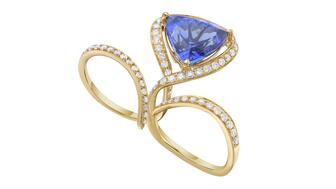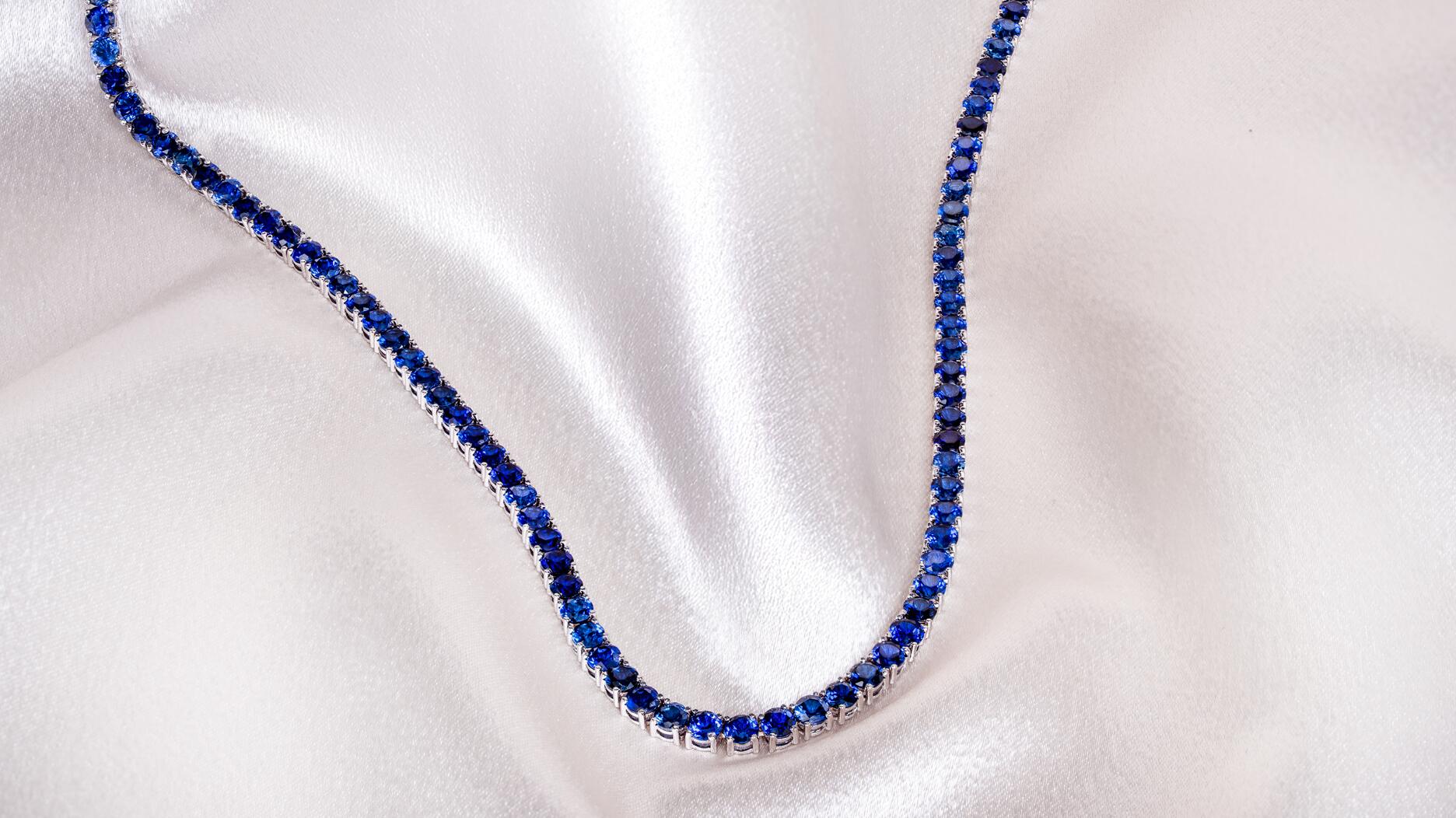Carlos Jose Hernandez and Joshua Zuazo were sentenced to life without the possibility of parole in the 2024 murder of Hussein “Sam” Murray.
11 Insights on Artisanal and Small-Scale Mining
Experts involved in mining around the globe discussed challenges and opportunities in the sector at the Chicago Responsible Jewelry Conference.
The mining side of the colored gemstone market is not without its issues and can feel like a major challenge when it comes to conversations around responsible sourcing.
But it’s a vital part of those conversations because it has such a tremendous impact on communities worldwide and plays an important role in the industry.
As Monica Stephenson of iDazzle and Anza Gems so succinctly put it during a panel at the recent Chicago Responsible Jewelry Conference: “Their challenges are our challenges, really. It affects all of us down the supply chain.”
While mining methods can vary from place to place, the challenges are largely the same.
Luckily, there are people in the industry already tackling those challenges head on, and a few of them came together during the conference for a panel on artisanal and small-scale mining.
Stephenson moderated the session. Panelists were: Salma Kundi Ernest, secretary general of the Tanzanian Women’s Mining Association (TaWoMA); Stuart Pool of Nineteen48, Rubyfair, Crown Gems and co-founder of Fair Luxury; Hewan Zewdi, co-founder of Gems of Ethiopia; Cristina Villegas, director of mines to markets at the NGO Pact; and Norbert Massay, Pact program manager.
Here are a few interesting takeaways from the panel, several of which reiterated the challenges and obstacles mentioned in the panel on gemstone cutting.
On establishing a transparent mine-to-market supply chain in Sri Lanka
“From the outset we wanted to make sure that we knew everything about the stones that we were going to be selling. And it became very quickly quite apparent that in order really to be able to say to people, to our customers, hand on heart, ‘we know exactly where the stones come from,’ it was going to be to actually own the whole supply chain.”
-- Stuart Pool
On what it’s like to be a miner in Sri Lanka
“Fortunately in Sri Lanka, we have a very good environment in terms of the mining and the sourcing of gemstones. It’s a very major part of the economy in the country, and it’s something they’ve been doing for centuries. There’s a very well-established framework, a good understanding of the industry, and there’s also a good legal structure. So we don’t face a lot of the issues that are faced in other countries about the marginalization of the mining communities or the illegal nature of mining activity.”
-- Pool
On providing assurances to customers about the origin of their gems
“I
-- Pool
On the challenges inherent in working with local Ethiopian miners
“The problem is mostly they don’t have any knowledge of the value of gemstones.”
-- Hewan Zewdi
On if the government is encouraging the gem trade
“The Ethiopian government and the Ministry of Mining have established actually a very traceable system from mine to market because all the artisanal miners are licensed and they have an association to back them up … And (the government is) more than happy and supportive for us to open small lapidaries to export and to expand this side of mining.”
-- Zewdi
On what they’re doing for their miners
“We … decided to add the miners as part of our company to share profits instead of just buying from them or contracting from them. We decided we need to add them to the mining profit and whatever we’re doing. They deserve it. They work hard. They have a very challenging job. They don’t have transportation. They don’t have water to the area. They don’t have schools. They struggle. They don’t even have a decent ladder to move down the whole to dig up stuff.”
-- Zewdi
On the challenges of mining in Tanzania
“She mentioned four challenges. One of them is they don’t have the equipment to do the work … The second one is knowledge about doing the mining. Actually they keep on asking every time, ‘Is there a machine that they can use to find out where is the pocket?’ Another one is the finances to do the work. For example, food for the people who are mining. Sometimes it’s difficult to get food to feed them. And the fourth one is the markets. It’s very difficult to get to markets. They only get local buyers whom they sell to for a very low price.”
-- Norbert Massay translating for Salma Kundi Ernest
“It’s true that paying for a license is (also) one of the key challenges among women. It costs about $400, which is very difficult for a normal woman who is mining to get $400.”
-- Massay for Kundi Ernest
On the impact of the GIA’s gem guide project
“Before this project began … it was really difficult for them to know the value of the materials they had. They were just selling whatever they thought was OK. After this project, they can identify, they can sort, they know how to wash and add value into the material … They are really now getting more money than when they didn’t have this project. It has added a lot of value into their life using a book and using a tray.”
-- Massay for Kundi Ernest
On the current ban on exporting rough in Tanzania (extended to all rough gems earlier this year in an effort to establishing cutting in country)
“It’s a big challenge. For her and for the communities, it is very difficult to sell now. So even when they know the quality of the rough they have, now they have been selling it at an even lower price compared to even before they knew the value.”
-- Massay for Kundi Ernest
“To fully understand the scope of the problem, you have to understand that Tanzania is not prepared to cut in any way, shape or form the amount of material that is coming out. It’s a grand noble gesture but there is no practicality to it.”
-- Monica Stephenson
The Latest

Yood will serve alongside Eduard Stefanescu, the sustainability manager for C.Hafner, a precious metals refiner in Germany.

The New Orleans jeweler is also hosting pop-up jewelry boutiques in New York City and Dallas.

How Jewelers of America’s 20 Under 40 are leading to ensure a brighter future for the jewelry industry.

Set in a Tiffany & Co. necklace, it sold for $4.2 million, the highest price and price per carat paid for a Paraíba tourmaline at auction.


The jeweler’s “Deep Freeze” display showcases its iconic jewelry designs frozen in a vintage icebox.

Take luxury gifting to new heights this holiday season with the jeweler’s showstopping 12-carat sphene ring.

Roseco’s 704-page catalog showcases new lab-grown diamonds, findings, tools & more—available in print or interactive digital editions.

This year's theme is “Unveiling the Depths of the Ocean.”

In its annual report, Pinterest noted an increase in searches for brooches, heirloom jewelry, and ‘80s luxury.

Starting Jan. 1, customers can request the service for opal, peridot, and demantoid garnet.

The 111-year-old retailer celebrated the opening of its new location in Salem, New Hampshire, which is its third store in the state.

The new catalog features its most popular chains as well as new styles.

The filmmaker’s personal F.P. Journe “FFC” prototype was the star of Phillips’ recent record-setting watch auction in New York.

The new location in the Design District pays homage to Miami’s Art Deco heritage and its connection to the ocean.

Inflations, tariffs, and politics—including the government shutdown—were among consumers’ top concerns last month.

“Longtime favorite” presenters, as well as first-time speakers, will lead talks and workshops at the annual event in Tucson next year.

Silas Smith of Meridian Metalworks won the challenge with his pendant that blends Australian and American landscapes.

The sale of the 31.68-carat, sunset-hued stone was part of Sotheby’s first series of events and auctions in Abu Dhabi.

Most customers who walk into your store this month have made up their minds. Your job is to validate their choice, Emmanuel Raheb writes.

The collection features characters and motifs from Ukrainian folklore, including an enchanted mirror and a magic egg.

MatrixGold 3.11, the newest version of the jewelry design program, offers more flexibility, precision, and creative control.

The pavilion will be part of the 2026 JA New York Spring show, scheduled for March 15 to 17.

Kadet, a 1994 National Jeweler Retailer Hall of Fame inductee, helped grow the family-owned retailer in the Chicago area and beyond.

Billed as the world’s smallest wearable, Lumia Health’s new smart earrings have a health tracker subtly embedded in the back.

Don’t let those with December birthdays feel blue. Help them celebrate their month with blue zircon, turquoise, and tanzanite.

The new pink sapphire version of the piece dances with its wearer in the brand’s “Icons After Dark” holiday campaign.



























